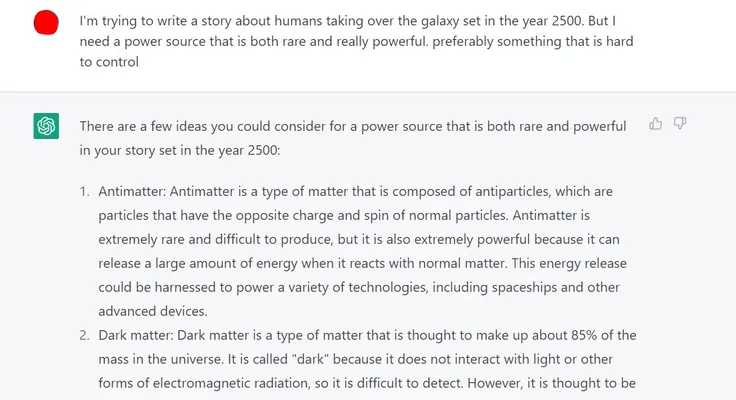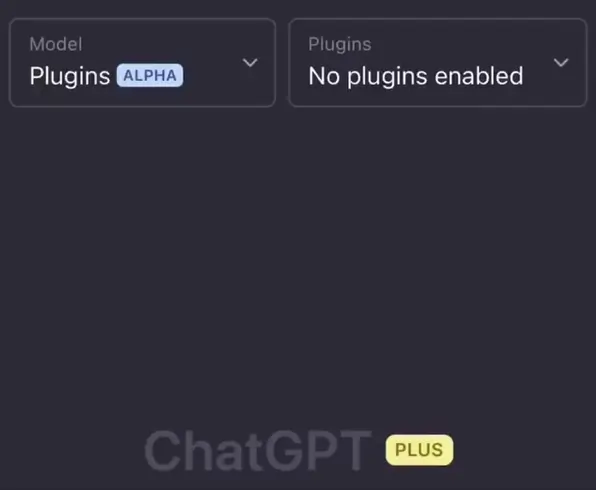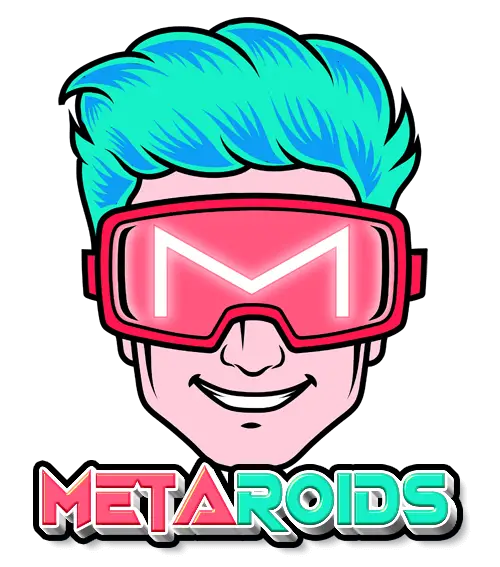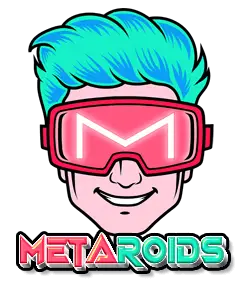From tech enthusiasts to marketers, writers to filmmakers; everyone is buzzing about ChatGPT, the latest technological innovation in the artificial intelligence (AI) field. No surprise there, as the advanced chatbot has a clear potential to change the way people live and work forever.
What most people fail to understand is that it will only get better exponentially from here. And less than 10% of the world is ready for what is to come.
When people think of AI disruption, they usually have the mental image of large robots or cyborgs with exoskeletons replacing manual labor, but the reality is much more complex and multifaceted. We’ve discovered that machine intelligence is actually a hit among creatives, more so than in manual automation.
It’s hard to imagine people not using this technology to assist in the creation of movies, music, web content, and other artistic endeavors in the future.
And its programming skills are nothing to scoff at either. Do you know that it could create simple programs for you? But unlike no-code development platforms, it’s a lot simpler to use because you only have to give it text instructions, and it understands almost perfectly. Almost.
This article aims to provide a comprehensive guide to learning ChatGPT, as understanding and mastering this technology today is crucial for staying competitive in the job market of the future.
What is ChatGPT
ChatGPT is an advanced AI chatbot based on a large language model (LLM) developed by OpenAI that can engage in conversations that are more human-like than any known predecessors. The model can even respond to follow-up questions, recognize its mistakes, challenge incorrect statements, and deny inappropriate requests.
On top of being trained using advanced techniques such as reinforcement learning and Proximal Policy Optimization, ChatGPT is also built on top of the powerful GPT-3.5 series of language models, the next-gen model to the all-popular GPT-3. This series, which was trained on an Azure AI supercomputing infrastructure, is known for its stellar performance in a variety of natural language processing (NLP) tasks.
As a result, it is able to respond to a wide range of questions and prompts with impressive accuracy and fluency, honestly putting Siri to shame.
ChatGPT is currently owned by OpenAI, an AI research lab co-founded by Sam Altman, Elon Musk, and a few others in 2015. The chat system was launched to the public in November 2022 and was able to hit 1 million users in merely five days.
ChatGPT Plus
ChatGPT Plus is a premium subscription of ChatGPT that offers an enhanced and more convenient user experience compared to the free version. It comes with several benefits, including priority access even during peak hours, uninterrupted login sessions, faster response generation, priority access to new features and upgrades, and higher daily limits for sending requests.
And if you want to know if it’s worth the cost or not, click here for an unbiased review of ChatGPT Plus.
GPT-4: The Next Stage of ChatGPT’s Evolution
On March 14, 2023, OpenAI finally unleashed its GPT-4 large language model, its most powerful AI model yet. You can access this cutting-edge system by simply upgrading your free ChatGPT account to ChatGPT Plus, which costs $20, plus a lil’ tax.
GPT-4 boasts stunning capabilities including visual processing (which will have a gradual release), enhanced reasoning and creativity, and 82% more resistance against jailbreaking. You can also check its other exceptional abilities from our previous article, including creating games, Google Chrome extensions, mobile applications, and more, with just simple prompts.
And by digging further into the GPT-4 rabbit hole, you’ll discover that it can also execute other stunning tasks like inventing its own language, creating lawsuits, and even ordering a pizza with ease. But if you want to access the GPT-4 API for bigger and more complex projects, you can either sign up on its API waitlist (for programmers) or Research Access Program (for researchers).
Note that even though GPT-4 is now equipped with enhanced guardrails against adversarial prompts or jailbreaking, OpenAI openly admits that the new model could still be susceptible to such attacks.
How Does ChatGPT Work?
In order to communicate with ChatGPT effectively, it’s best that you learn how to prompt. A prompt is a user’s request for information in computer programs. In ChatGPT, they are used to provide context and set the stage for the conversation.
The prompt is used to seed the model with some initial text, and the model then uses this text to generate a response in the most human way possible.

ChatGPT was trained via a method called unsupervised learning on a data collection of billions of words. Instead of performing one specific task, it was trained to recognize patterns in the data and generate responses based on those patterns.
In simple terms, the machine was given a large collection of text data taken from the internet and was commanded to learn it without much human input. To generate a response, it takes an input text and processes it through its internal model, which is based on a neural network. This network has learned to predict the next word in a sequence of words based on the ones that came before it.
The result: a mind-blowing chat tool that can seemingly answer any question or do a variety of tasks for a user.
What Can ChatGPT Do?
Despite being a newly launched tool, ChatGPT has already gained a lot of popularity among internet users due to its impressive ability to understand and respond to human language in a way that no search engine has before. Let’s explore its common use cases below:
Answer General and Specific Questions
The most common use case of ChatGPT is in providing information. It can answer questions with a high degree of accuracy (but not 100% reliable) in a wide range of subjects such as history, science, mathematics, politics, literature, art, and more. Queries like “explain neuroscience like I’m five” or “which part of the Iliad did Achilles die” can go a long way with the AI tool.
In addition, it can help in correcting grammar, spelling, and typos, as well as providing guidance or instructions for various tasks and activities. For example, it could help you learn how to cook a specific dish based on your limited ingredients, install a household item, or suggest career choices based on your specific skills and interests.
ChatGPT is so convenient that people are now starting to use it in the place of Google Search for some queries. And while the chatbot does have overlapping use cases with search engines, it is not designed to be a replacement for Google Search as it doesn’t always provide the most up-to-date or even accurate information.
Assist in Creative Tasks
ChatGPT is akin to a superpower when it comes to aiding creatives in a variety of activities, such as content creation, copywriting, and brainstorming ideas. It can help you generate ideas for blog posts, videos, podcasts, fictional stories like comics, novels, movies, and the list goes on.
One of the key features of ChatGPT is its ability to understand and respond to natural language inputs, making it easy for users to implement their ideas by getting exact answers to very specific questions. This is something that Google currently lacks.
Here’s an example of a sci-fi author using ChatGPT to explore concepts and ideas that would fit his story.

Apparently, stories come in several mediums. The first AI-written and -directed short film was made by ChatGPT. That’s right, some users take automation a step further by commanding ChatGPT to generate full stories, articles, or marketing materials that are coherent and seemingly written by a professional.
But note that human creativity is still crucial if you want to publish something worthwhile, even with ChatGPT’s assistance.
As for content writing, you may check out our in-depth article on how to use ChatGPT to write content.
Assist in Programming Tasks
ChatGPT is a handy tool for coding tasks and can significantly reduce the time spent by software engineers.
If you’re a beginner, it can explain programming concepts and help you understand how to apply them in your code. You can even ask it to write code for simple apps like webpages or pixel games.
If you are already adept at programming, then it’s a lot easier for you to automate code since you can easily correct ChatGPT’s errors. Many developers swear that it does 90% of the job in some tasks.
It is also helpful in debugging errors in your written code.
Engage in Conversations
Perhaps the simplest and often most overlooked aspect of ChatGPT is, well, its chat feature. The tool has the ability to communicate to users in a natural way, far surpassing any chatbot ever released to date.
It can understand the context and meaning of phrases and sentences, allowing it to generate human-like responses. Furthermore, it can remember inputs from earlier conversations just like a human. Right now, there are some restrictions on this particular ability (probably to save costs).
The potential applications for ChatGPT are endless, and this list is only a small sampling of its depth of capabilities. As OpenAI continues to enhance its algorithm and expand its dataset, we will likely discover more capabilities for this innovative tool in the next few months and years.
Current Limitations
ChatGPT is a powerful tool with a multitude of capabilities that set it apart from other chatbots, but make no mistake, it is not without limitations. For starters, the AI is unable to browse the internet and must rely on its pre-trained data to generate responses, meaning it lacks knowledge of current events.
Additionally, it is limited to text-based commands and is unable to process visual input such as images or videos.
Above all, ChatGPT’s most glaring flaw is its tendency to hallucinate, a phenomenon in which an AI confidently generates a response that is not supported by its training data. A correct-sounding yet factually wrong response is an insidious combination, capable of tricking and deceiving users who aren’t experts on the topic they’re asking about.
This shortcoming is particularly concerning as it has the potential to propagate false information across the web as web publishers use ChatGPT in generating content. Unless you are well-versed on the topic and can confirm validity yourself, you shouldn’t take its responses at face value. Always cross-reference ChatGPT-generated answers with other credible sources to ensure accuracy and to get a well-rounded understanding of a particular topic.
AI technology is constantly evolving, and ChatGPT may become more sophisticated and reliable over time, but it is important to keep in mind its current limitations.
Offerings Powered by ChatGPT
Plug-Ins
OpenAI has finally equipped ChatGPT with internet capabilities through Plug-Ins, which work like apps that could significantly increase the chatbot’s productivity. They were initially rolled out to a small set of users and will be gradually released to the public.

The company has introduced a range of powerful plug-ins including ‘Browsing’, which allows the tool to surf the web. Other initial plug-Ins it has unleashed include Wolfram, Expedia, Instacart, Zapier, and Klarna Shopping.
These current add-ons, and others that will be released in the future, will bring out the tool’s full power and highlight the strength of its upcoming large language models (LLMs).
Microsoft Will Soon Bring ChatGPT To MS 365 Products
Microsoft has already integrated ChatGPT into some of its well-known services, including Bing, Edge, Skype, and Teams. But the tech giant has also vowed to bring the AI chatbot to its other popular products such as Word, Excel, PowerPoint, and Outlook.

Microsoft 365 users will soon have access to a Chat-GPT-powered “AI Co-pilot” that will automate the creation of your documents, slides, and spreadsheets. Additionally, the company plans to integrate the powerful tool into its Windows 10 and 11 operating systems.
Threats Faced by ChatGPT
Barely five months after its launch, ChatGPT is already facing some of its most significant challenges to date. These include state-led banning, its first major defamation case, a series of hacking vulnerabilities, and even fake versions of itself.
Italy startled the world by officially banning the popular tool from its citizens’ devices, a move that may compel other countries to follow suit. The decision was based on concerns about the privacy risks posed by the tool. But the government indicated that it would be willing to lift the ban if OpenAI complies with the European Union’s (EU) privacy regulations. Italy is part of the EU, a political and economic alliance consisting of 27 nations.
OpenAI is also facing its first-ever defamation case brought by an Australian mayor in response to a false bribery claim made against him by the chatbot. This incident underscores the potential consequences that the company may encounter in the future due to ChatGPT’s hallucination issues.
Related: Jailbreaking Threats that Still Haunt ChatGPT
Another serious challenge that it is facing right now is the series of hacking incidents that have revealed its supposed system weaknesses. In fact, there were reports of account takeovers, where hackers have managed to remotely access and control users’ OpenAI accounts. Furthermore, it is also dealing with a so-called ‘Zero Day’ attack, which unleashes undetectable malware that could steal users’ sensitive information.
On top of these headaches, users are also facing imminent risks from fake browser extensions and even fraudulent ChatGPT chatbots advertised on Facebook. Once downloaded, these tools can spread malware on users’ devices and access their information.
How to use ChatGPT?
If you are interested in learning how to use ChatGPT, there are a few things you need to know before taking the first steps. You might be wondering whether using ChatGPT costs money, and the answer is “no”. ChatGPT is free to use, at least until OpenAI decides to finally monetize it.
You can access ChatGPT on the web portal chat.openai.com and create an account. Play around with different types of prompts. In fact, we have just the perfect resource to get you started:
Read our list of brilliant ways to use ChatGPT to assist in work and life.
The more you learn about ChatGPT now, the better off you’ll be in the future.
If you’re anxious that ChatGPT might replace your job, don’t worry because there is always a way to thrive. You just need a bit of strategy and guidance. See our guide to thriving in the ChatGPT era.
While ChatGPT doesn’t have a mobile app as of yet, you can actually use it on both Android and iOS via your mobile browser. Simply log in to chat.openai.com and use it in the same way as the web interface.
Join our newsletter as we build a community of AI and web3 pioneers.
The next 3-5 years is when new industry titans will emerge, and we want you to be one of them.
Benefits include:
- Receive updates on the most significant trends
- Receive crucial insights that will help you stay ahead in the tech world
- The chance to be part of our OG community, which will have exclusive membership perks


